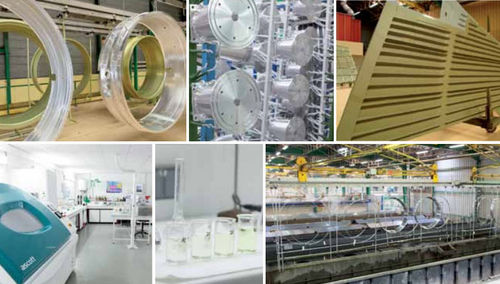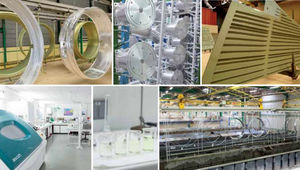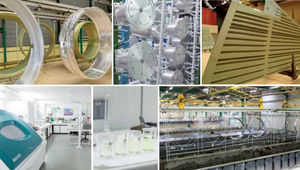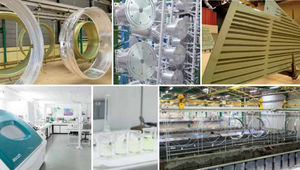
- Industrial machines and equipment
- Surface Treatment
- Hard anodizing
- SGI - Société de Galvanoplastie Industrielle
Hard anodizing aluminumfor aeronauticsindustrial

Add to favorites
Compare this product
Characteristics
- Type
- hard
- Type of substrate
- aluminum
- Applications
- for aeronautics, industrial, automotive
- Production method
- large series, medium series, small series, individual
- Certifications
- EN 12 373-18, EN 12 373-2 / 17, EN 2536, ISO 10 074, ISO 9227-NSS
Description
Hard anodizing is a specific application of sulphuric anodizing. This process is usually performed in a bath of sulphuric acid from 10 to 20% (by volume), at low temperature, generally from -5 to 5°C.
Description of the process
The use of low temperature allows the application of higher current densities (typically 3 A/dm2) and minimizes the dissolution of the oxide, which allows us to reach significant thicknesses (25 to 100 μm), and especially in dense structures. For coatings formed of hard anodizing we note an increase in the hardness, abrasion resistance and electrical and thermal insulation. Consequently, this treatment is particularly recommended when resistance to abrasive or erosive wear is paramount. Colouring and sealing of the coating are possible but they decrease hardness and wear resistance.
Appearance: grey or brown (black colouration is possible)
Thickness: 5 to 60 µm
Microhardness: 300 to 500HV for 50 µm, depending on the alloy
Surface condition: slight deterioration of the roughness,
Electrical insulation: 500 to 1000 volts~
Coefficient of friction: good under high load
Reduction in fatigue: 30 to 50% depending on the alloy
Corrosion resistance:
- without sealing: ~ 50 h
- sealing with nickel salt ~ 300 h
- sealing with chromium VI salt ~ 500 h
Catalogs
No catalogs are available for this product.
See all of SGI - Société de Galvanoplastie Industrielle‘s catalogsOther SGI - Société de Galvanoplastie Industrielle products
Treatment by electrolytic conversion
Related Searches
- Anodic oxidation
- Aluminum anodic oxidation
- Painting
- Small series anodic oxidation
- Large series anodic oxidation
- Painting on metal
- Medium series anodizing
- Hard anodizing
- Aeronautic anodic oxidation
- Automotive anodic oxidation
- Industrial anodizing
- Individual anodizing
- Sulfuric anodic oxidation
- Chromic anodic oxidation
- Painting on steel
- Pickling
- Aeronautic painting
- Painting on aluminum
- Anodizing for the food industry
- Steel pickling
*Prices are pre-tax. They exclude delivery charges and customs duties and do not include additional charges for installation or activation options. Prices are indicative only and may vary by country, with changes to the cost of raw materials and exchange rates.





